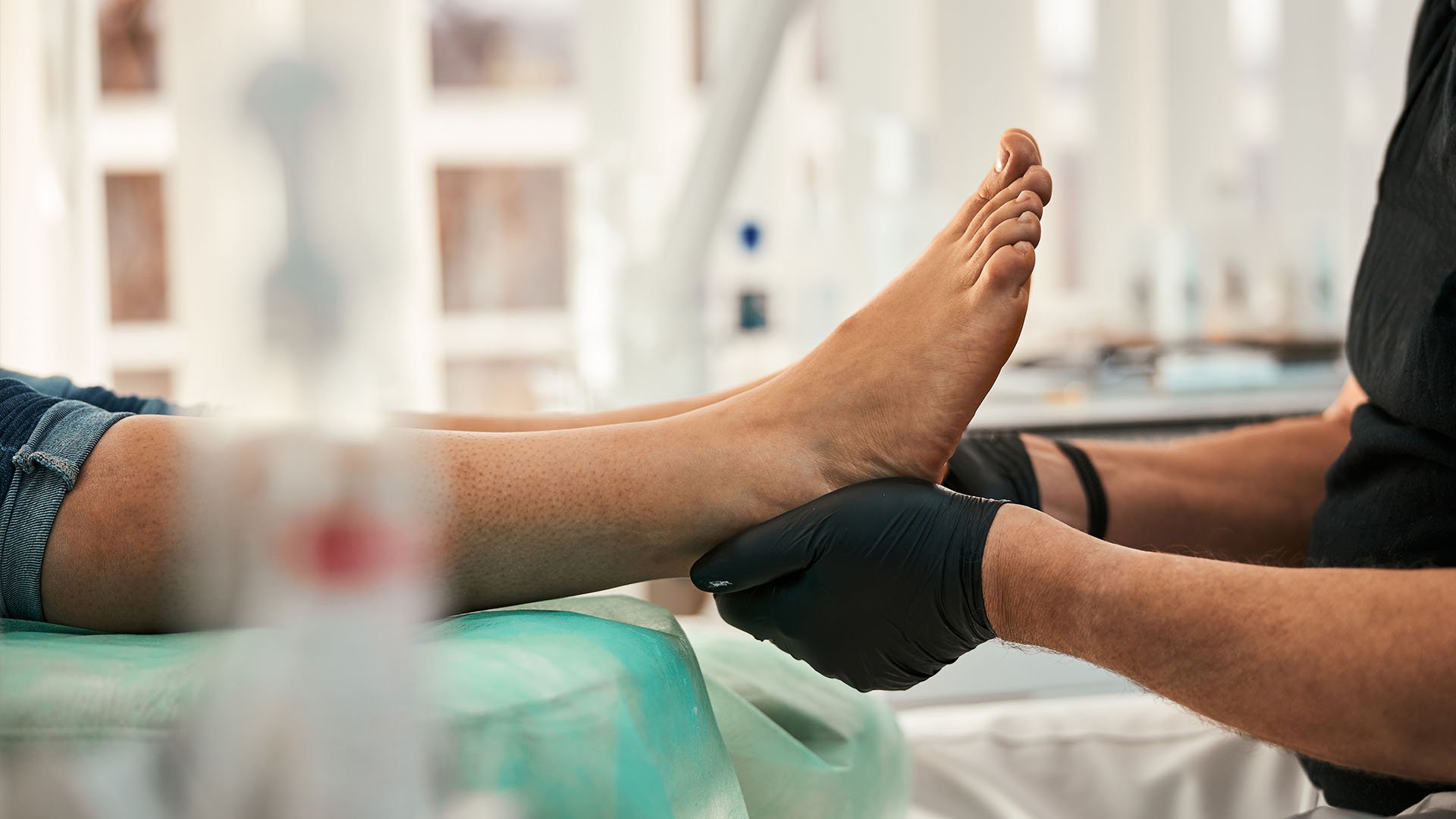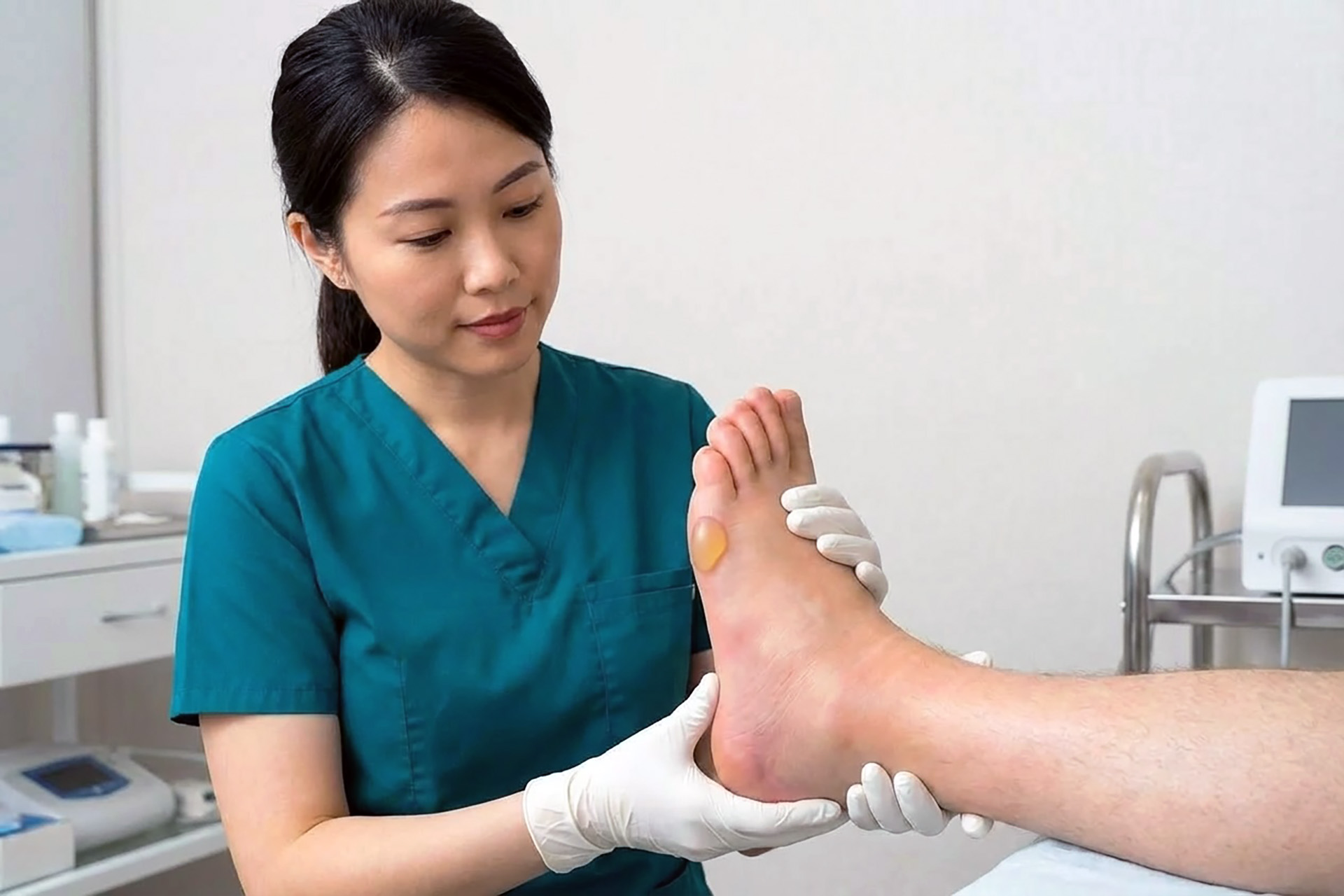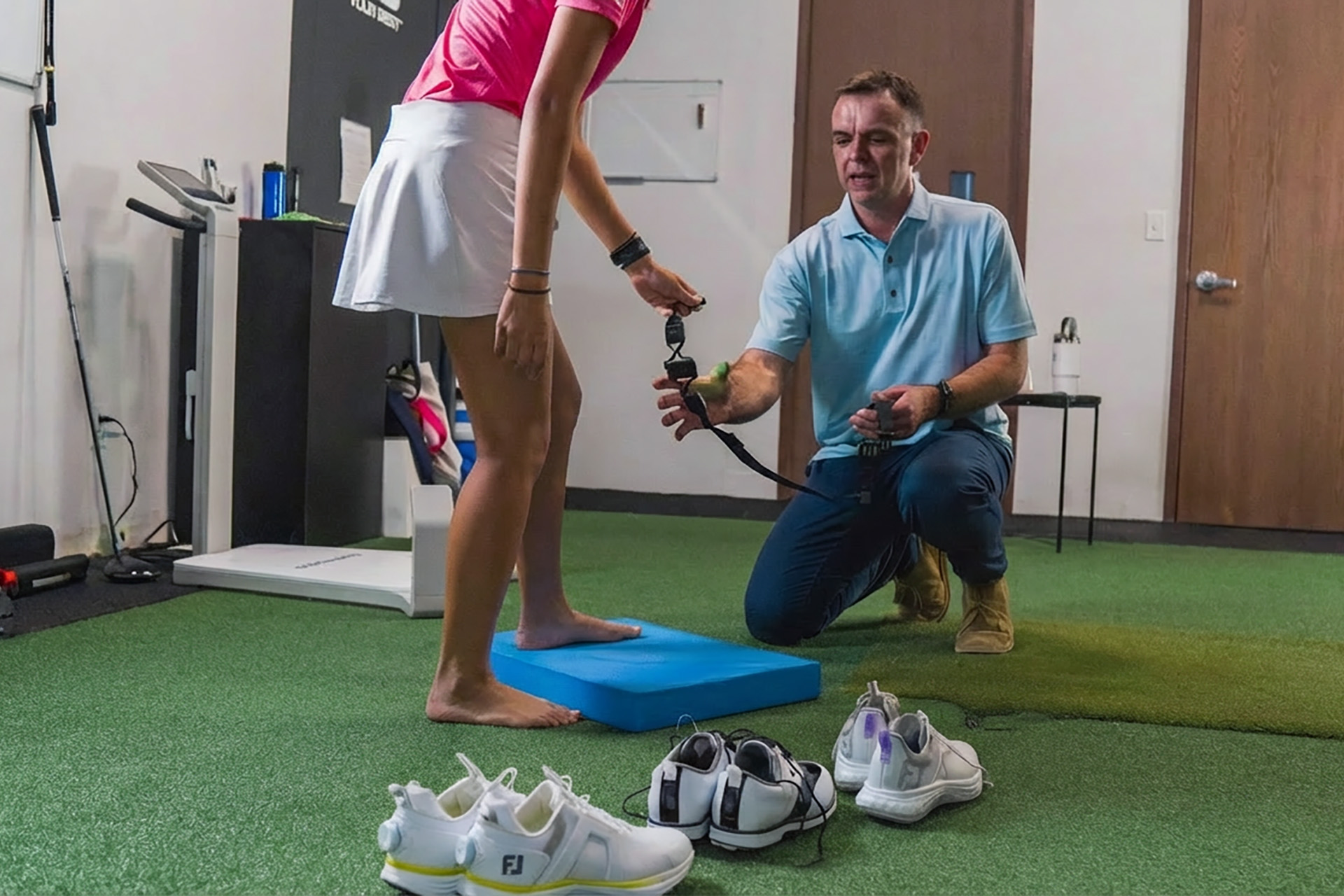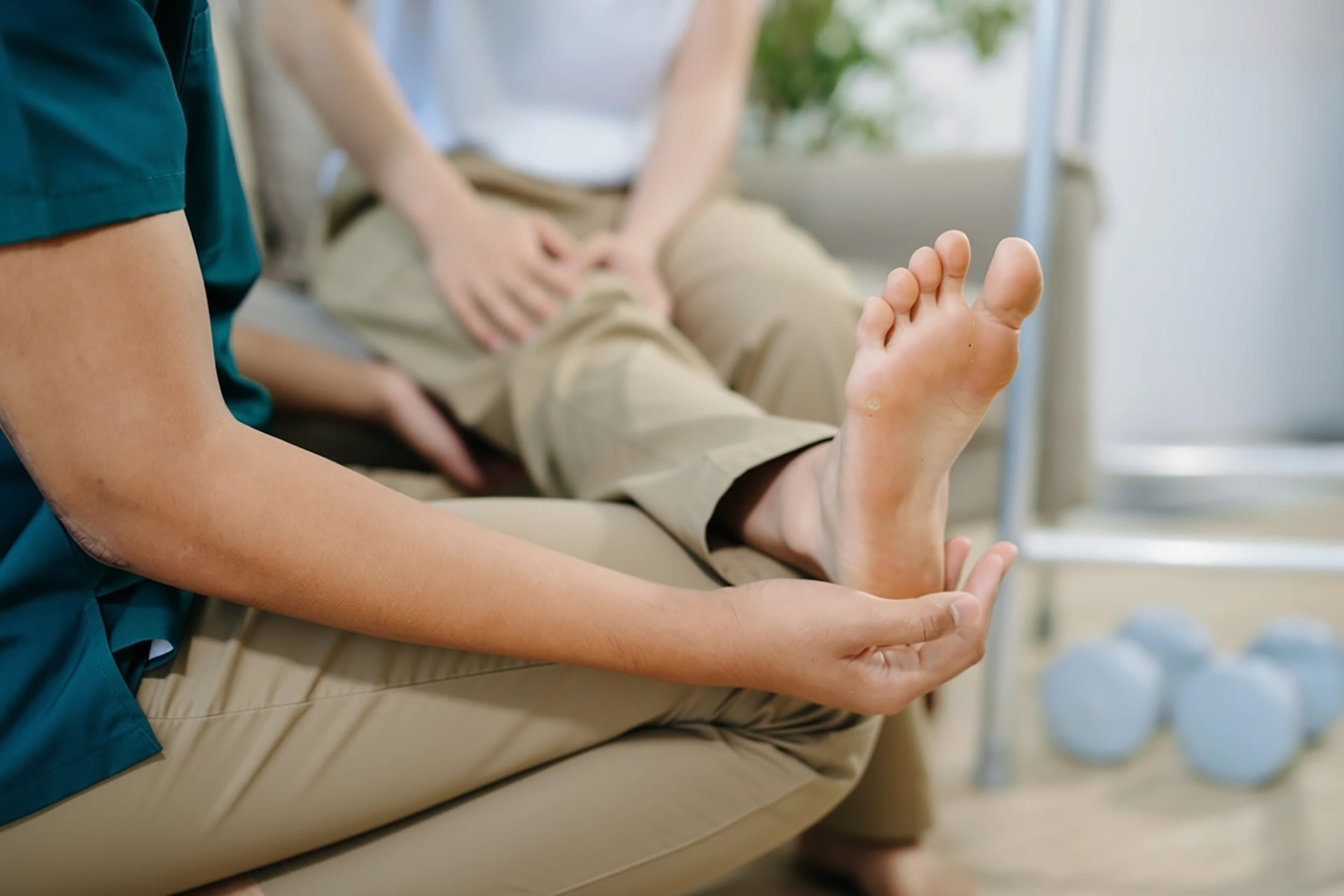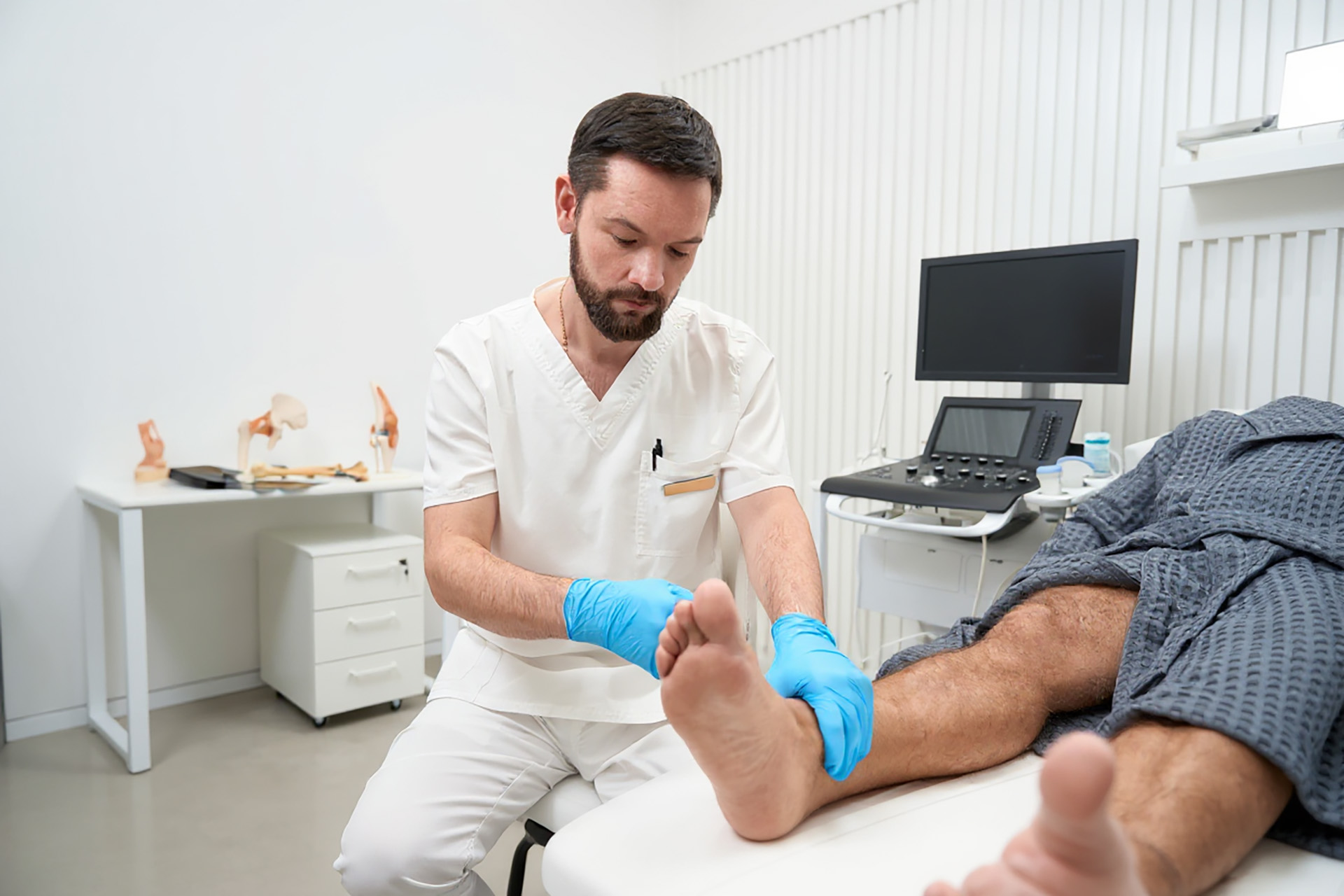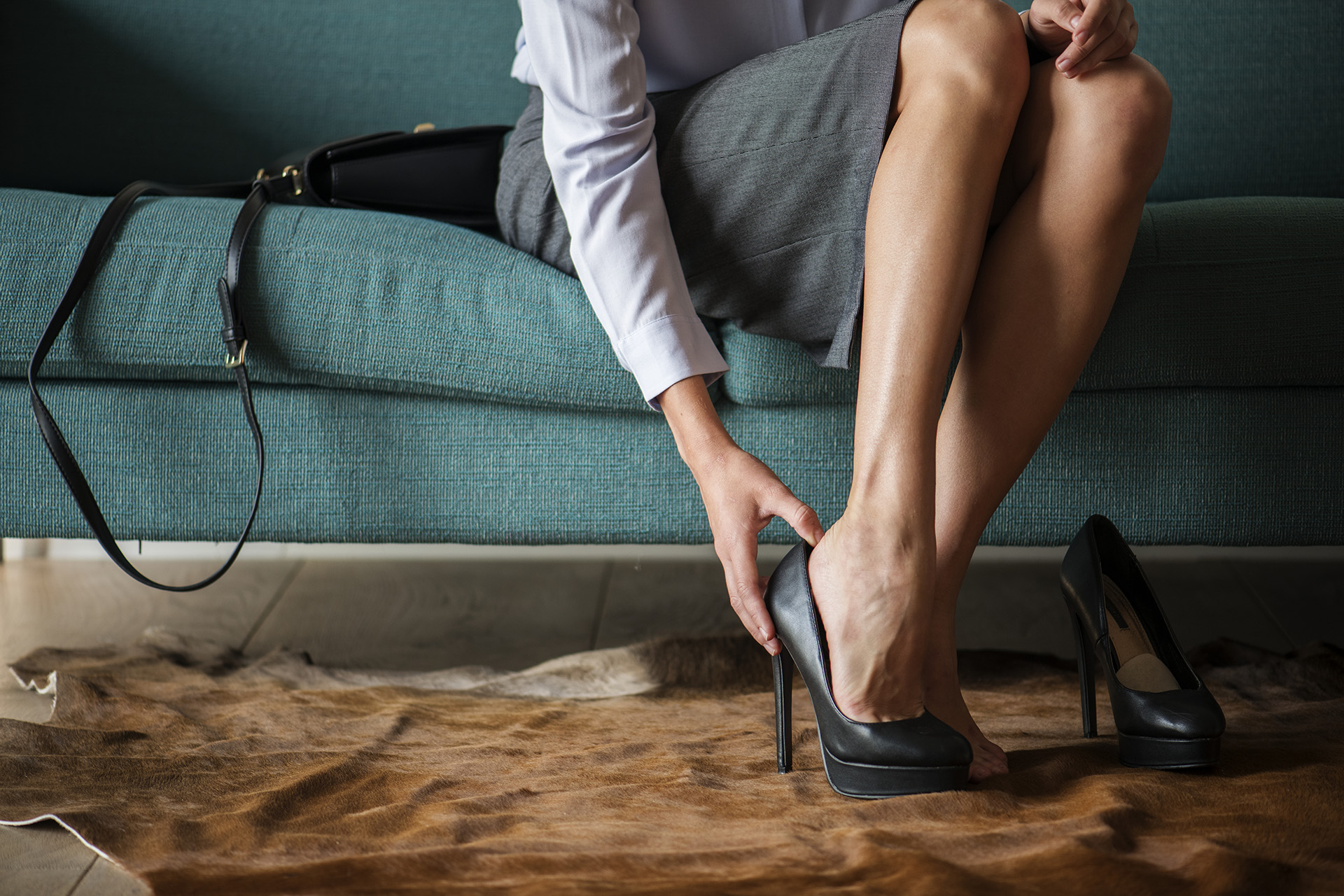The heel is designed to take a lot of stress. It is padded with thick skin and fat to pound the pavement or do sports activities without pain. However, if you do these things to excess, you can develop various kinds of heel pain. Heel pain can occur from overuse of the heel or wearing shoes that do not effectively cradle the heel as you walk or run.
Symptoms and Diagnosis of Heel Pain
Heel pain can be located on the bottom of the heel or in the back. A podiatrist or foot doctor can ask you questions about where your pain is located and may be able to elicit tenderness in the affected area. The range of motion of the heel and ankle will be assessed, and areas of swelling will be noted.
Because there can be many causes of heel pain, you should seek the advice of a podiatrist who can help you identify the source of the musculoskeletal pain. X-rays may be taken to see if any heel spur on the bottom of the heel may contribute to the pain. Our podiatrist will also watch you walk and ask you to stand on the heel to see how it sits on the ground.
Causes of Pain Underneath the Heel
If you are experiencing pain beneath the heel, it may be due to any conditions that cause inflammation of the soft tissue at the bottom of the foot. These include the following:
- Bruising from stepping on something. You can step on something hard like a stone or rock, bruising the tissue that usually pads the heel. This may show up as a bruise on the bottom of the foot and minor swelling. Usually, you know you’ve stepped on something and can rest the foot, relieving pain and inflammation.
- Heel Spur. You can develop a heel spur on the bottom of your calcaneus, made from calcium deposits. The heel spur is the insertion point of the plantar fascia that spreads along the arch of the foot to help form the arch. An x-ray can be done to show the calcium deposit. The best way to treat a heel spur is to rest the foot as much as possible. Your podiatrist or doctor will show you exercises you can do to relieve the pain or can make or recommend inserts for your shoe that are cut out to protect the heel spur. In rare cases, surgery must be done to remove the heel spur if conservative measures fail to heal the pain and inflammation.
- Plantar fasciitis. This is an inflammation of the connective tissue band that connects the calcaneus (the heel bone) to the base of the bones that make up the toes. It is caused by walking or running too much on the foot. The pain is usually in the base of the heel, but it can spread down the foot to involve the entire arch of the foot. It is usually worse first thing in the morning or after an exercise program involving being on your feet. Your podiatrist can recommend exercises to ease the pain, shockwave therapy for plantar fasciitis, or heel pads can be placed in the shoe to protect the plantar fascia and ease the heel pain.
Causes of Pain Behind the Heel
Pain behind the heel is usually related to the Achilles tendon, specifically to an inflammation of the area where the Achilles tendon connects to the calcaneus. This is known as retrocalcaneal bursitis. This can be caused by excessive running or shoes that excessively rub the back part of the heel. This type of pain tends to build gradually over time. The skin over the heel can be thickened from excessive rubbing on it, and there can be redness or swelling over the back of the heel.
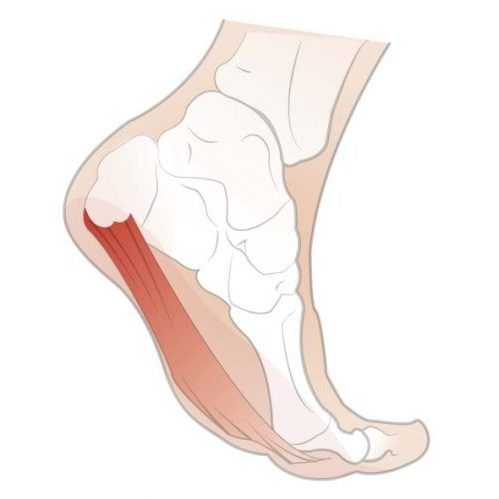
Some people will get a bump on this part of the heel that is both warm and tender. It may be more painful first thing in the morning or when you get up after resting for a period of time. Wearing normal shoes can become too painful when this occurs. There may be a bone spur underneath the swelling, and an x-ray can show this.
Treatment for pain behind the heel may include various stretching exercises, avoiding activities that worsen the pain and wearing shoes with an open back. Heel inserts can be prescribed to pressure different parts of the heel, and stretching exercises can be done to stretch out the Achilles tendon. Nonsteroidal anti-inflammatory medication can be used for the pain, and ice can temporarily ease the inflammation.
If you’re suffering from heel pain, make an appointment with our podiatrist to evaluate your condition so that we can recommend the best podiatry treatment to address your pain.

